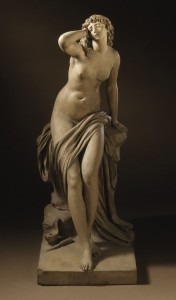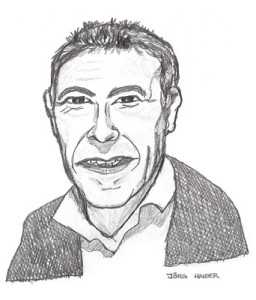
These two chapters deal with a special brand of patriotism, which came into being when a new austrian entity emerged from under the debris of the World War. It was different to traditional austrian nationalism, which had been about a middle european empire and its alleged historical mission. You can call it “kleinösterreichisch”, a “smaller austrian nationalísm”, the self-awareness of an undersized but definitely distinct nation state.
This nationalism was far more youthful than its older, sometimes ill-bred siblings and cousins on the continent. It was a late-comer, who came of age at the height of the cold war, but in a unequivocally democratic environment.
Its parents (and godfathers) were the People’s Party (ÖVP) und Social Democrats (SPÖ), which at this point in time had amassed considerable merits vis-à-vis the young federal state. In the beginning of the Second Republic 90 per cent of the population and more voted either ÖVP or SPÖ.
After the war many still regarded themselves as german, but for most the Nazi regime and the war had banished this thought from their minds. They gradually came around to accepting a new (and old) national identity, a process, that was actively promoted by ÖVP and SPÖ. But even as late as 1964 only 47 per cent of the population believed in the existence of an austrian nation. By 1993 this number had climbed to 80 per cent.
For more than a generation the Freedom Party (FPÖ) was considered as anti-austrian, sometimes even treasonous, because it was german nationalist and europeanist at the same time. After the war the first chairman of Freedom party had been sent to prison, because he had in 1938 participated in a government, which ushered in the Nazis. Moreover the FPÖ had been the original europeanist party in Austria. In the 1960ies the target of a european federal state was incorporated into FPÖ’s party programme, at a time, when this demand sounded outright freaky.
This macro climate lasted for about a generation. But in the second half of the 1980ies policy makers in SPÖ and ÖVP decided that Austria should join the European community.
This about-turn was only made possible by the reform minded new general secretary of the SU communists’, Michael Gorbachev, who at this time promoted the formation of a “common european home.” Before that time the russian-austrian relations had always been a touchy issue.
Russia had been a signatory power of the “Staatsvertrag”, the Independence Treaty of 1955, which had given birth to an independant country.
Afterwards the Soviet Union guarded the status quo like a jealous husband. The Soviets did not want Austria to join the EEC because in their eyes this would have been a breach of Austrias neutrality, which was in their interest in military strategic terms. The neutrality law was paramount for Austria and the view of the Soviets was shared by 90 per cent of politicians and experts in Austria itself – at least publicly.
At least up until the late 1980ies. With Gorbachev the Soviet stance on this matter softened and Austrian fears of the Red Army began to wane (well founded fears by the way, dating back to the days, when the Red Army had entered Austria as an occupation force. )
In 1989 Austria filed its membership application. After a successful referendum the republic joined the European community in 1995, which by then had started to call itself a union. These years were a period of transition, which brought about huge changes to austrian internal politics.
But well before that Social democrats and People’s Party had already developed into a somewhat monstruous dual entity and this political monster has survived till this day.
For seven decades now it has taken advantage of its power position, being deeply ingrained in the political hardware of the Second Republic. It is the old, ubiquitous and so familiar story of corruption and political patronage.
The austrians called it “Proporzsystem” and they knew early on,what was going on. But oddly enough, the Proporz did not inflict too much damage onto both parties. During the first 40 years of the republic nobody really cared about it – right up to the 1980ies. In 1986 still more than 84 per cent of austrians voted either SPÖ or ÖVP and the voter turn out in parliamentary elections was 90 per cent.
But in the years, that followed, social democrats and conservatives began to distance themselves from their previous ideology. They said good bye to “smaller austrian patriotism” and became paneuropean parties.
Of course they tried to conceal it to the best of their ability, but it simply was too evident. Citizens, who attached importance to patriotism – or at least political independence – started getting angry and stopped voting for them. The consequence being that in September 2013 only 51 percent voted “red” or “black” while the voter turnout was reduced to 75 per cent.
Six months later, in March 2014, opinon polls indicate, that SPÖVP together stand at 44 or 45 per cent. This decline is in no way comparable to the losses the german parties had and still have to suffer.
Today most austrian non-voters think, that elections are a waste of time, because “nearly everything has been decided in Brussels anyway and the rest will be determined by SPÖ and ÖVP politicians without paying attention to the man on the street”. In Viennese german: “Die G’fraster packeln eh alles miteinander aus. Die brauchen mi eh net.” (“The crooks do their bargaining all alone anyway. They don’t need me.”)

This atmosphere and the termination of allegiance to the second republic fostered a young right wing politician big way. His name was Jörg Haider. He got to the top of the austrian Freedom Party in 1986.
During the next five years the FPÖ stayed german nationalist and “pro european” – at a time, when this was not fashionable at all. Nonetheless Haider doubled his share of votes, while still speaking at meetings with former SS members.
But then he acted like SPÖ and ÖVP, or rather: he acted miror-invertedly. The FPÖ changed its identity politics. It became austrian nationalist and eurosceptic.
So SPÖ/ÖVP and FPÖ did something similar to the childrens’ play called “Trip to Jerusalem”, where the players have to change their chairs, sitting down when the music stops. Former german nationalists became austrian patriots after traditional austrian patriots had turned paneuropean.
As a consequence Haider kept winning votes and in 1999 the FPÖ scored a big victory. At the ballot box the former 5 per cent party got 27 percent and overtook even the People’s Party. This and heavy losses for the social democrats led to a change in government. ÖVP the FPÖ formed a centre right coalition and for the first time in history one part of the two headed monster was truly left outside.
This was a watershed event, but not so much because of the “sanctions” with which the EU countries punished a government, which had to count on rightwing populists. It was a game changer, because this collaboration proved to be deeply problematic.
The FPÖ failed in walking the tightrope between being a government and an opposition party. In early elections 2002 it was smashed and lost two thirds of the votes. It was a big victory for Wolfgang Schüssel, the conservative master strategist. 2002 was the year, when the seemingly unstoppable advancement of FPÖ came to a halt.
Only three years earlier most pundits had attributed FPÖ’s success to their right wing populism. They compared Haider to the Pied Piper of Hamlin, an old german saga about the consequences of alluring the public. Haider, they said, had managed to mobilise the “Bodensatz der Gesellschaft”, the residuum, worst part of society. And in 2002 they claimed, that the FPÖ had been “demystified” by three years of government participation and that the tide had turned.
There is an element of truth in both of these explanations, but this was not all of it, not by far.
Had it been an adequate explanation, the problems of ÖVP and SPÖ would have been solved by 2002. The FPÖ would have been reduced to a true junior partner in government, its strongman “exiled” to the southernmost province Carinthia (as governor), and the party being split up in the end. According to this line of thought the old guard would by now have regained complete control of the austrian parliament.
But the problems of the powers that be were far from over. In 2006 ÖVP lost eight percent(age points) and even the social democrats, who had been in the position to regenerate for seven years, lost votes. They only “won” this election, because the People’s Party lost more. The losers decided to join forces, once again. At least they still could muster 70 per cent of the votes at this time.
Today only two thirds of this – and a big question – remain: What are the root causes for the ongoing emaciation of the (former) major parties? Is it corruption or political wear and tear only? Or has it to do with their blatantly obvious deception tactics especially with regard to EU integration?
Maybe the populace, which took so long to getting accustomed to their country, is now seriously miffed about being robbed of it. And has become suspicious, that the whole thing could be only a project by SPÖ and ÖVP to stay in power – now and ever and unto ages of ages.
Full documentation in Volltext. The second and third chapter will be up sunday evening.
Foto: Sculpture in Los Angeles County Museum, Jacquelinekato, Wikimedia Commons
Comments are closed, but trackbacks and pingbacks are open.